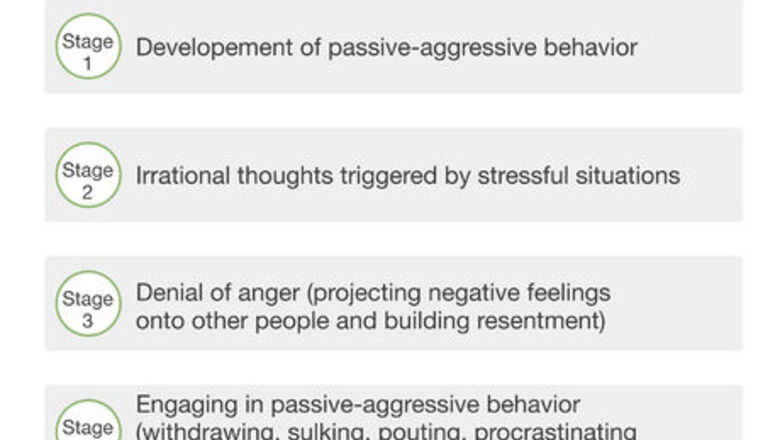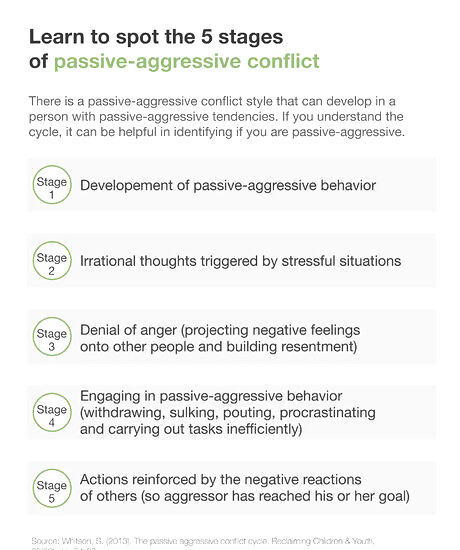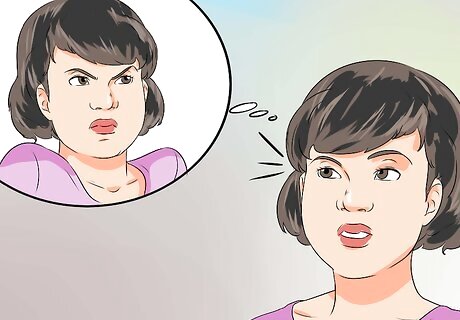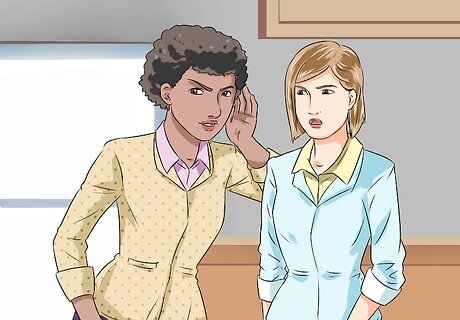
views
X
Research source
Hopwood, C.J., & Wright, A.G.C. (2012). A comparison of passive-aggressive and negativistic personality disorders. Journal of Personality Assessment, 94(3), pp. 296-303.
Passive aggressive behavior indirectly resists authority or indirectly shows resentment towards an individual. Someone who is passive-aggressive typically seeks to avoid conflict. Subversive passive-aggressive behavior can go unnoticed as you mask underlying frustrations with superficial courtesies. Eventually, your anger will emerge when events reach a volatile stage. If you understand and reform your passive aggressive tendencies, you will be able to make positive strides towards nurturing a healthier, happier career and social life.
Identifying Your Passive Aggression
Start a behavior journal. Journaling is a useful means of identifying, evaluating, and correcting your own behavior. Your journal can help you determine triggers for your behavior and allows you a safe place to be honest about your own reactions and how you would like to act differently in the future. Write out all your behaviors in this journal that you think might be a little wrong.

Know the stages of passive-aggressive conflict. There is a passive-aggressive conflict style that can develop in a person with passive-aggressive tendencies. Stage one of the passive-aggressive conflict cycle is the development of passive-aggressive behaviors. As they develop socially, individuals usually think that direct expressions of anger are perilous and should be avoided . The person then solves their anger issues by masking the anger with passive-aggressive behaviors. Stage two of the passive-aggressive conflict cycle is a stressful situation that triggers irrational thoughts based on these early life experiences. For example, if a teacher asks a student to pass out a worksheet and that student has a prior history of being asked to do things and not being appreciated for it, the student might fall back on this history in the current situation. Instead of feeling honored by being asked to help, the student will feel resentful because the request has triggered a pre-learned response. Stage three occurs when the passive-aggressive individual denies their anger, which can lead to projecting negative feelings onto other people and building resentment towards others. Stage four of the cycle is to engage in passive-aggressive behavior. This includes (but is not limited to): denying feelings of anger, withdrawing, sulking, pouting, procrastinating, carrying out tasks inefficiently or unacceptably, and exacting hidden revenge. Stage five of this cycle is the reactions of others. People typically react negatively to passive-aggressive behavior and, often, this is what the aggressor is hoping for. This reaction then only acts as reinforcement for the behavior and the cycle will begin again.

Identify incidents in which you acted passive-aggressively. You may become overwhelmed if you start listing every time you have ever shown passive-aggressive behavior. Instead, identify three or four episodes when you realized you were passive aggressive. One place that you may have acted passive-aggressively is in the workplace. There are four specific behaviors that are common to passive aggressive habits at work: temporary compliance, intentional inefficiency, letting a problem escalate, and hidden but conscious revenge. As you are working on identifying your own passive aggressive behaviors, a really good (and important) place to start identifying patterns is in your professional life at work.

Record information about what happened. It is important to identify and eliminate faulty patterns of thought that were developed early in life. To eliminate these thought processes, first identify when and how they are occurring. Look back and try to recall specific details about your behavior. It can be helpful to view the circumstances as a third-party observer would, being as objective as possible. If you start feeling emotional, take a deep breath and clear your thoughts before continuing. Don't deflect your own role in what happened. The purpose is to examine the circumstances and motivations that bring out your passive aggressive actions. Consider the following questions: Who were the other parties involved? What were their relationships to you (for example: boss, coworker, friend, parent, roommate, teacher)? Did they have authority over you; were they your peers; did you have a decision-making role? Where did it happen? For example, at work, home, school, a party, a game, or a club? When did this occur? Sometimes the timing is a factor, such as the beginning of a school year or during the busy holiday season. How did the incident unfold? Was there a specific trigger or a series of events involved? What was the sequence of actions and responses? What happened in the end? Were the results what you set out to achieve with your negative behavior? What were the reactions of others?

Examine what your passive aggressive reactions were during these incidents. Generally, this behavior manifests as deliberate contradictions between what you say (passive) and what you actually do (aggressive). The following are common manifestations of passive-aggressive behavior: offering public support but indirectly resisting, procrastinating or undermining the successful completion of social and occupational tasks agreeing to do something and not following through or pretending to forget giving someone the silent treatment but not letting the person know why pleasing people publicly but demeaning them behind their backs lacking the assertiveness to express feelings and desires but expecting others to know what they are overlaying positive comments with pointed sarcasm or negative body language complaining of being misunderstood and unappreciated by others being sullen and argumentative without offering constructive ideas blaming others for everything while avoiding responsibility unreasonably criticizing and scorning authority to your peers responding to unwelcome authority with covert, dishonest actions repressing emotions in fear of conflict, failure or disappointment expressing envy and resentment toward those apparently more fortunate voicing exaggerated and persistent complaints of personal misfortune alternating between hostile defiance and contrition predicting negative outcomes before even starting the work
Look for patterns in your behavior. In reviewing your past actions, did you see yourself repeating the way you responded to certain situations or people? Were the outcomes similar? Did other people react to you in the same way? Did you feel better or worse in the end? Think about how these patterns may not be serving you well.
Accept your emotions. Denying what you truly feel is part of the problem with passive aggressive tendencies. You don't want others to know that you are angry, hurt, or resentful, so you act as if you aren't. Your feelings only intensify and become more irrational because you haven't provided yourself a healthier outlet for them. Therefore, it is important to allow yourself to feel and acknowledge your emotions so that you can deal with them in a healthier way.
Build your self-awareness. This is where you need to be honest with yourself to understand the underlying reasons you have these negative feelings. Was it something your coworker said? Did you feel pressured into doing something you didn't want to do? Were you not recognized by your manager for your contribution to the last project? Did your friend get a better grade than you thought they deserved? Look below the surface and figure out what you really want.
Reducing Your Passive-Aggressive Tendencies

Recognizing Your Passive Aggressive Behavior. The first step in becoming less passive aggressive is developing self awareness about your behavior. Watch out for behaviors such as social withdrawal, pouting, performing tasks inefficiently (on purpose), stubbornness, and procrastination. The chronic nature of this trait means it didn't develop overnight, so making changes will take time and determination.

Listen and observe. Communication is just as much about listening and reading unspoken messages as it is about speaking openly and directly. Consider what the other person is saying or not saying in response to your own actions. They could be as passive aggressive as you are. Look at things from a different perspective. Could you be over-reacting? Take a step back and review the situation again.
Lose your sarcasm. Sarcasm is a common fall-back for people with passive aggression and will only worsen bad situations. These are some common phrases to avoid: "Whatever" "I'm FINE" Why are you so upset?" I'm just kidding"
Avoid temporary compliance. In work situations, an employee engages in a specific type of passive aggression called temporary compliance when they agree to a task and then are late in completing the task. They may be late because of procrastinating, arriving late to meetings or check-ins, or misplacing important documents. Employees usually engage in temporary compliance when they feel underappreciated at work but don't know how to appropriately express these feelings. If you find yourself engaging in temporary compliance, try to determine whether or not you're doing this because you don't feel appreciated. This type of passive aggression could take place in the home as well. You may tell your partner that you will do the dishes consistently, for example, and then put it off to intentionally annoy them.

Recognize your intentional inefficiency. With intentional inefficiency, a person values the opportunity to be hostile more than they value their own competence. An example of this would be an employee who continues to produce the same amount of work with the quality of the work significantly decreasing. Employees who are confronted about this behavior often play the role of the victim. This kind of behavior can be damaging to both the employee's organization and the employee's reputation. Recognizing this type of behavior can allow you to start reducing passive aggressive behaviors at work, which will do your career a lot of good. In the home, this could manifest as intentionally taking a very long time to do the dishes or as doing a half-hearted job washing the dishes so that your spouse has to re-wash them before putting them away.

Don't let a problem escalate. Letting a problem escalate is a passive aggressive behavior whereby an individual refuses to confront or address a problem. Instead, they let the problem build until it becomes a bigger problem. Examples of letting a problem escalate at work include procrastination and misuse of sick or vacation days. In the home, this could be refusing to do the dishes for so long that there is a giant pile overflowing out of the sink and across the counters and your family is having to eat from paper plates because there are no clean dishes. (Your spouse is likely also angry with you in this scenario.)

Recognize hidden but conscious revenge. Hidden but conscious revenge means an individual is secretly undermining the individual who has upset them. This can take place in the form of gossip or other undetected acts of sabotage. In the office, you may spread rumors about someone who has upset you, compromising your professionalism and their reputation. At home, this may be trying to win the favor of your children and subtly turn them against the other parent. At work, this could mean intentionally losing a client or causing a project to fall through to “get back” at the company, even though it hurts you personally as well.Avoid self-deprecation. Self-deprecation involves someone engaging in behaviors that are harmful to themselves in order to get revenge on the person who has upset them. For instance, a student might purposely fail a test to get back at a teacher, or an athlete might play poorly during a game to get back at a coach.
Developing Healthier Emotional Habits

Give yourself time to change. Changing a behavior you have cultivated overtime takes a lot of time and repetition. Remember that change is a process that is not always linear. Don't be afraid to go back to the beginning and re-assess your behavior. At the same time, don't be hard on yourself if you find yourself unsuccessful on your first attempt. The more you practice and work through your passive aggressive tendencies, the more likely you are to successfully change your behavior. If you find yourself getting off track in your attempts to change passive-aggressive behavior, take a moment to pause and reflect on what is happening. Ask yourself: Can you identify the reasons why you are taking steps backward? Do you need to pause and take a different approach at changing that specific behavior? Is there an underlying feeling or emotional response you have not recognized or worked through yet?
Learn to be assertive and express yourself honestly and respectfully. Once you understand what is bothering you, then you can start to speak up for yourself and say what you mean. Practice what you would say to find the right words without being in the heat of the moment. Hear how you're coming across. You can be forceful and direct without having to hurt the other person. Take the blame out of your words and communicate your feelings in a positive manner. Opening yourself up in this way may make you feel more vulnerable in the beginning but you'll gain confidence as you progress. For example, you may be annoyed at someone at work because they always take the last cup of coffee without starting a new pot for others. Instead of keeping quiet until it escalates, speak your mind. Say, "I see that you're getting the last cup of coffee. Would you mind starting a fresh pot if you get the last cup so that the rest of us can drink coffee on our break as well? Thank you!" At home, you can be clear with your expectations for your significant other. If your partner is supposed to do the dishes after dinner and doesn't, try saying "I know that you are tired after working all day, but we agreed that if I cooked dinner, you would do the dishes. If you would prefer to cook and have me do the dishes, we can do that instead, but I think we should share the responsibility for daily household chores."
Realize that conflicts are okay. Disagreements are not uncommon. Some of the confrontations you encounter may not be conflicts but rather misunderstandings. You usually are not in any danger if you can defuse your anger and make your discussions constructive and positive. It's possible to agreeably disagree and be able to work out compromises that bring "win-win" results to both parties involved. In this way, you are taking control instead of allowing passive aggressive behavior to send issues out of control. At work, you may disagree with someone about the way a project should be approached. You may want to sit and develop a plan, while a co-worker may want to jump right in and start coming up with visions for the end result without considering first how to get there. Instead of getting angry or annoyed, talk to the person about your differences in process. You may not be able to agree on the best approach to the project, but perhaps you can divide the labor in a way that draws on both of your strengths; your planning and their vision. At home, you might talk to your partner and find that you have assigned them a chore that they really hate doing. Perhaps you can work out a deal where they take on other chores that they find less disagreeable and you can do their chore. For example, they may agree to vacuum, cook, and take out the trash in exchange for not having to do the dishes.
Choose success. Avoid chasing a negative outcome; change your focus to achieve a successful end. Some people like to admit failure early so they don't raise expectations, including their own. If you use passive-aggressive behavior in the workplace because you feel unappreciated, try taking pride in your own work. Make changes to find your work more fulfilling if possible.

Take pride in your success. Even if you make slow but positive progress, you're still changing your behavior in the direction you want. Giving up your typical passive aggressive responses removes the safeguard behaviors you've put in place. So it's okay to feel a little unsure. Being able to communicate clearly what you are feeling will only help make you more effective and your relationships stronger.
Getting Help when You Need It

Enlist help when you need it. Don't be afraid to enlist the help of a trained psychiatrist or psychologist. The roots of passive aggressive behavior often run deep and need more than just independent behavior modification. Psychotherapy can help you work through some of the deeply rooted issues you may have.

Understand Passive Aggressive Personality Disorder. The validity of Passive Aggressive Personality Disorder as an official mental disorder is subject to debate. Some mental health professionals insist that it does qualify as a personality disorder, and some maintain that it does not. Whether or not the disorder is “officially acknowledged,” you should seek professional counseling if you feel that you cannot control your passive aggression.

Be aware of an increased risk for depression or suicidal thoughts. Studies show that those with Passive Aggressive Personality Disorder have a high rate of depression and suicidal thoughts. If you find yourself struggling with depression or suicidal thoughts as a result of these issues, seek help immediately! You can reach out to local mental health agencies in your area, or contact a suicide hotline for more information. The Suicide and Crisis Lifeline is 988. You can call or text this number.



















Comments
0 comment